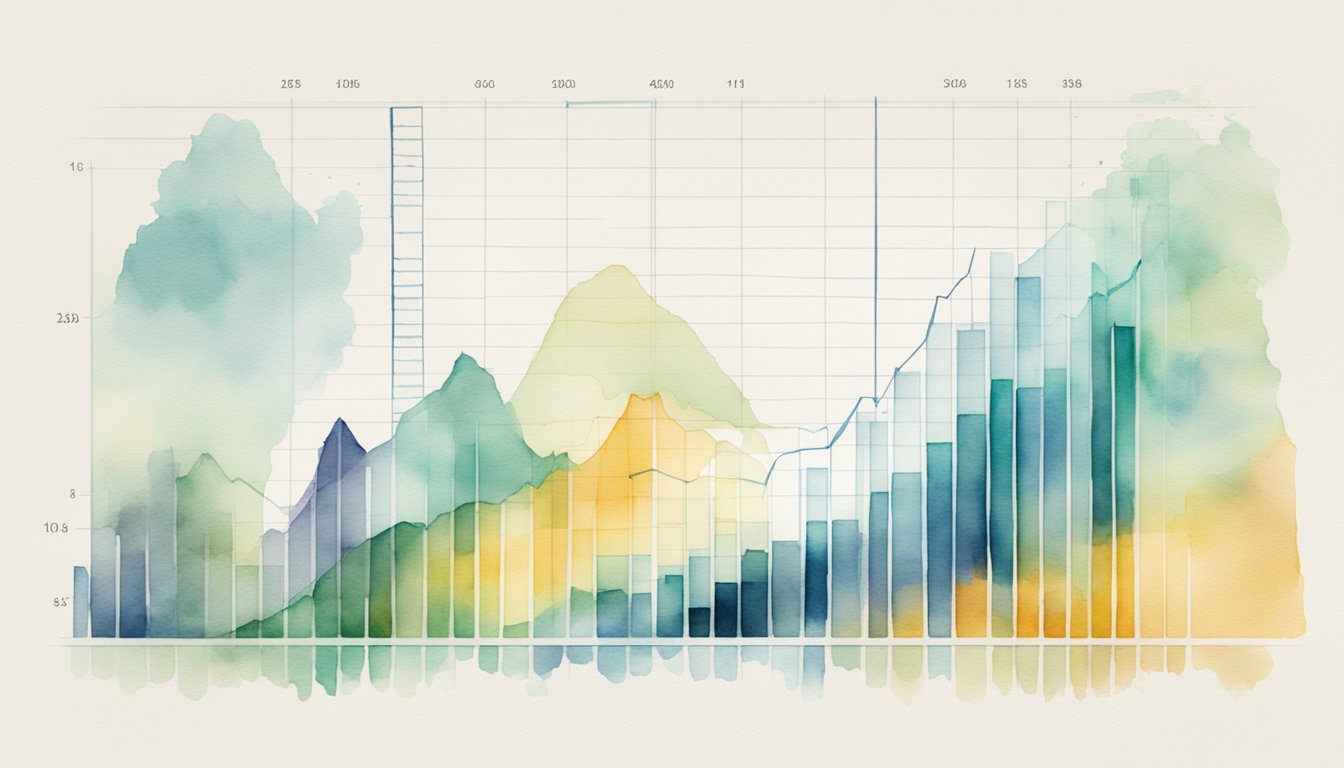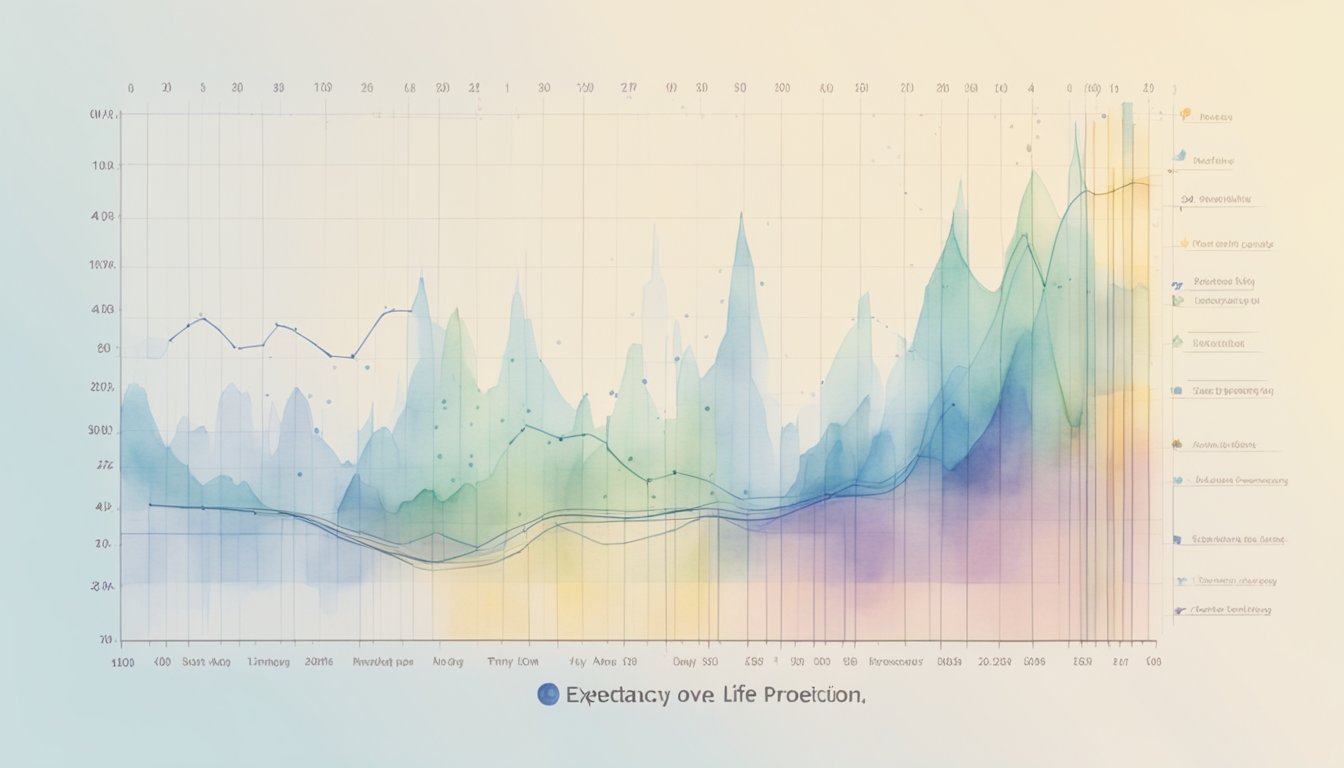Overview of US Life Expectancy Trends
Life expectancy in the United States has seen a mixture of rises and falls throughout recent years, painting a complex picture of the nation’s health and well-being. As of 2019, Americans could expect to live an average of 78.8 years, reflecting subtle year-over-year increases up until that point. These upward trends represented improvements in healthcare, technology, and disease prevention.
However, the advent of 2020 brought with it unprecedented challenges, most notably the COVID-19 pandemic which caused a sharp and distressing decline in life expectancy. The impact of COVID-19 on mortality rates was significant, and data from 2020 highlights a stark decrease, with life expectancy dropping to levels not seen since WWII.
Entering 2021, the fallout continued, though at varied rates across different population groups. The fluctuations in life expectancy are products of numerous factors, including access to healthcare, socioeconomic status, and public health initiatives. Death rates pivot around these societal pillars, with initiatives aimed at reducing mortality often leading to gains in life expectancy.
The United States, in its vastness, exhibits regional variations in these trends. Certain areas show resilience and robust public health responses, which can mitigate the decline and in some cases, usher in an increase in average longevity. Nonetheless, an intricate tapestry of determinants, from lifestyle to legislation, continues to influence the life expectancy narrative.
Influences on Life Expectancy in the US

Life expectancy in the US has fluctuated over time, shaped by a myriad of factors ranging from healthcare advancements to socioeconomic variables. This complex web of determinants reveals much about the society and the era.
Health Factors
Various health factors play a significant role in American life expectancy. The National Center for Health Statistics closely monitors these trends. Among the leading causes that have impacted mortality rates are heart disease and drug overdoses, which have notably increased in prevalence over recent years. For instance, the opioid crisis has contributed to higher death rates, particularly from 1999 onwards, when opioid overdose deaths began a steep climb.
Pandemics such as COVID-19 have had profound impacts on life expectancy, straining healthcare systems and leading to historical dips in the population’s average lifespan. Simultaneously, chronic diseases like heart disease continue to be significant health concerns. Efforts to mitigate these issues include public health campaigns and improved treatments, which could potentially extend life expectancy if effectively implemented and accepted.
Socioeconomic Factors
Life expectancy can be heavily influenced by socioeconomic factors such as education and poverty. Educational attainment has been linked with longer lifespans, potentially due to a better understanding of health-related information and more consistent access to healthcare. Conversely, poverty can limit access to quality healthcare and nutritious food, which may contribute to shorter life expectancies.
In addition, there is a notable disparity in life expectancy among different income groups. The richest Americans tend to live significantly longer than the poorest, underscoring the deep-seated influence of socioeconomic status on health and longevity.
Demographic Trends
Demographic trends indicate significant variations in life expectancy across different groups within the US population. It was found that life expectancy varies between races, with Native Americans and African Americans typically having lower life expectancies than Caucasians. Also, there are notable differences between men and women, with women generally living longer than men.
Factors such as suicide rates and prevalence of certain diseases in specific populations also alter demographic life expectancies. These demographic insights highlight the importance of culturally competent healthcare and targeted public health interventions to address the unique needs of each group.
Statistical Data and Projections

When the topic is life expectancy in the United States, projections and statistical data paint a vivid picture of where Americans have been and where they may be heading. This section digs into the reliable reports from governmental and health organizations and analyzes vital statistical data about births, deaths, and mortality trends.
Government and Health Organization Reports
Projections of life expectancy are a fundamental aspect of understanding demographic shifts. The U.S. Census Bureau provides comprehensive projections for the years up to 2060, taking into account changes in mortality trends by race and presenting a vision of what the future US population may resemble. Similarly, the National Center for Health Statistics (NCHS) provides data derived from historical patterns to predict future trends in life expectancy, helping form a clear picture of the nation’s health at various points in time.
Reports that utilize global data sources like World Population Prospects, lend additional insight by presenting comparative analyses, therefore providing a broader context about where Americans stand in terms of health and longevity relative to other nations.
Analysis of Birth, Death, and Mortality Data
Understanding life expectancy also involves meticulous analyses of birth, death, and mortality data. Life tables are statistical models that help map out the average age of death, shining a light on the probabilities of living to a certain age. These tables often differentiate by gender, giving detailed insights into the life expectancies of American males and females. For example, they can reflect disparities such as a slightly higher life expectancy for females when compared to males.
Child mortality, an important factor influencing average life expectancy, has seen fluctuations over the decades. Trends observed show that even a 0.1% change in child mortality can significantly impact average life expectancy calculations. Mortality data also captures the broader changes in population health, as even incremental percentage changes, like 0.18%, are crucial indicators of shifts in public health trends. This information, when added to the total body of demographic data, supports comprehensive projections about the future of American longevity.

